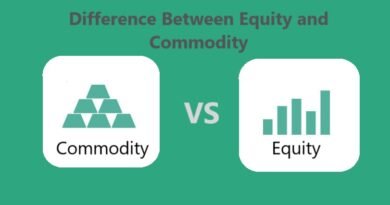Comparison of SIP and PPF: Which Investment Option Is Right for You?
When planning for financial goals, choosing the right investment vehicle is crucial. Systematic Investment Plans (SIPs) and Public Provident Fund (PPF) are two popular options in India. Both cater to different financial needs and risk appetites, and understanding their differences can help you make an informed decision. This article provides an in-depth comparison of SIPs and PPF based on various parameters such as returns, risk, flexibility, tax benefits, and liquidity.
What is a SIP?
A Systematic Investment Plan (SIP) is a disciplined way of investing in mutual funds. Under a SIP, investors allocate a fixed amount at regular intervals (weekly, monthly, or quarterly) into a mutual fund scheme. This approach allows for rupee-cost averaging and promotes regular savings.
Key Features of SIP:
- Market-linked Returns: Returns are based on the performance of the chosen mutual fund scheme.
- Flexibility: Investors can start with as little as 500 rupees per month and increase contributions over time.
- Customizable Tenure: SIPs can be continued for months, years, or even indefinitely.
- Diversification: Investments are spread across a diversified portfolio, reducing risk.
- Liquidity: SIPs offer higher liquidity, allowing investors to redeem their investments at any time.
What is a PPF?
The Public Provident Fund (PPF) is a government-backed savings scheme designed to encourage long-term savings. It offers guaranteed returns and is particularly suitable for risk-averse investors.
Key Features of PPF:
- Fixed Returns: The interest rate is revised quarterly by the government and typically ranges between 7-8% per annum.
- Long-Term Tenure: PPF has a lock-in period of 15 years, which can be extended in 5-year blocks.
- Tax Benefits: PPF falls under the EEE (Exempt-Exempt-Exempt) category, offering tax-free contributions, returns, and withdrawals.
- Safety: Backed by the Government of India, PPF is considered one of the safest investment options.
- Partial Liquidity: Partial withdrawals are allowed after the completion of 6 years.
SIP vs. PPF: Detailed Comparison
| Parameter | SIP | PPF |
|---|---|---|
| Type of Investment | Market-linked (mutual funds) | Government-backed savings scheme |
| Returns | Vary depending on the mutual fund’s performance; historically 10-15% for equity funds | Fixed returns (around 7-8% per annum, subject to government revisions) |
| Risk | Market risk; higher for equity funds, moderate for debt funds | Risk-free; principal and interest are guaranteed by the government |
| Tenure | Flexible; no fixed tenure | Fixed tenure of 15 years (can be extended in 5-year blocks) |
| Liquidity | High; investments can be redeemed anytime | Low; partial withdrawals allowed only after 6 years |
| Minimum Investment | Starts from 500 rupees per month | Minimum 500 rupees per year |
| Tax Benefits | Investments under ELSS SIPs qualify for Section 80C; returns are taxable based on tenure | Full tax benefits under Section 80C; returns and withdrawals are tax-free |
| Ideal For | Investors seeking higher returns with moderate to high risk | Risk-averse investors looking for stable, long-term growth |
Advantages of SIP
- Higher Returns Potential: SIPs, particularly equity-oriented ones, have the potential to deliver inflation-beating returns over the long term.
- Flexibility: Investors can adjust their investment amount, pause contributions, or switch funds as needed.
- Diversification: A diversified portfolio spreads risk across various asset classes and sectors.
- Liquidity: Easy redemption options make SIPs suitable for short- and medium-term financial goals.
- Rupee-Cost Averaging: By investing regularly, SIPs mitigate the impact of market volatility.
Advantages of PPF
- Safety and Stability: Backed by the government, PPF is one of the safest investment options available.
- Tax-Free Returns: Contributions, interest, and withdrawals are entirely tax-free.
- Disciplined Long-Term Savings: The 15-year lock-in period encourages disciplined wealth creation.
- Low Entry Barrier: Requires a minimum investment of only ₵500 annually.
- Guaranteed Returns: Offers a fixed rate of return that is revised quarterly.
Disadvantages of SIP
- Market Volatility: Returns are subject to market fluctuations, which can result in losses during downturns.
- Taxation: Gains from SIPs are subject to short-term or long-term capital gains tax.
- No Guaranteed Returns: Unlike PPF, there is no assurance of returns.
Disadvantages of PPF
- Low Liquidity: Funds are locked in for 15 years, with limited withdrawal options.
- Lower Returns Compared to SIPs: Fixed returns may not outpace inflation in the long run.
- Contribution Cap: Annual contributions are limited to 1.5 lakh rupees, restricting high-value investments.
Which One Should You Choose?
Choose SIP if:
- You are willing to take some risks for potentially higher returns.
- Your financial goals are medium to long-term (5-10 years or more).
- You want liquidity and flexibility in your investments.
- You aim to beat inflation and grow wealth over time.
Choose PPF if:
- You prefer a risk-free investment with guaranteed returns.
- Your financial goals are long-term (15 years or more).
- You seek maximum tax benefits under Section 80C.
- You want a stable, secure option for retirement or future expenses.
Can You Invest in Both?
For many investors, a combination of SIPs and PPF can offer the best of both worlds. While SIPs can provide higher returns and liquidity for medium-term goals, PPF can serve as a stable, long-term investment for retirement or other major financial milestones. Allocating funds based on your risk appetite, financial goals, and time horizon can help you build a balanced and robust portfolio.
Conclusion
SIPs and PPF cater to different financial objectives and investor profiles. SIPs are suitable for those seeking higher returns and flexibility, while PPF is ideal for risk-averse individuals aiming for long-term stability and tax efficiency. By understanding their unique features, advantages, and limitations, you can make an informed decision to achieve your financial goals.
Disclaimer: This article is for informational purposes only and does not constitute financial advice. Investing involves risk. Consult with a qualified professional before making any investment decisions.







